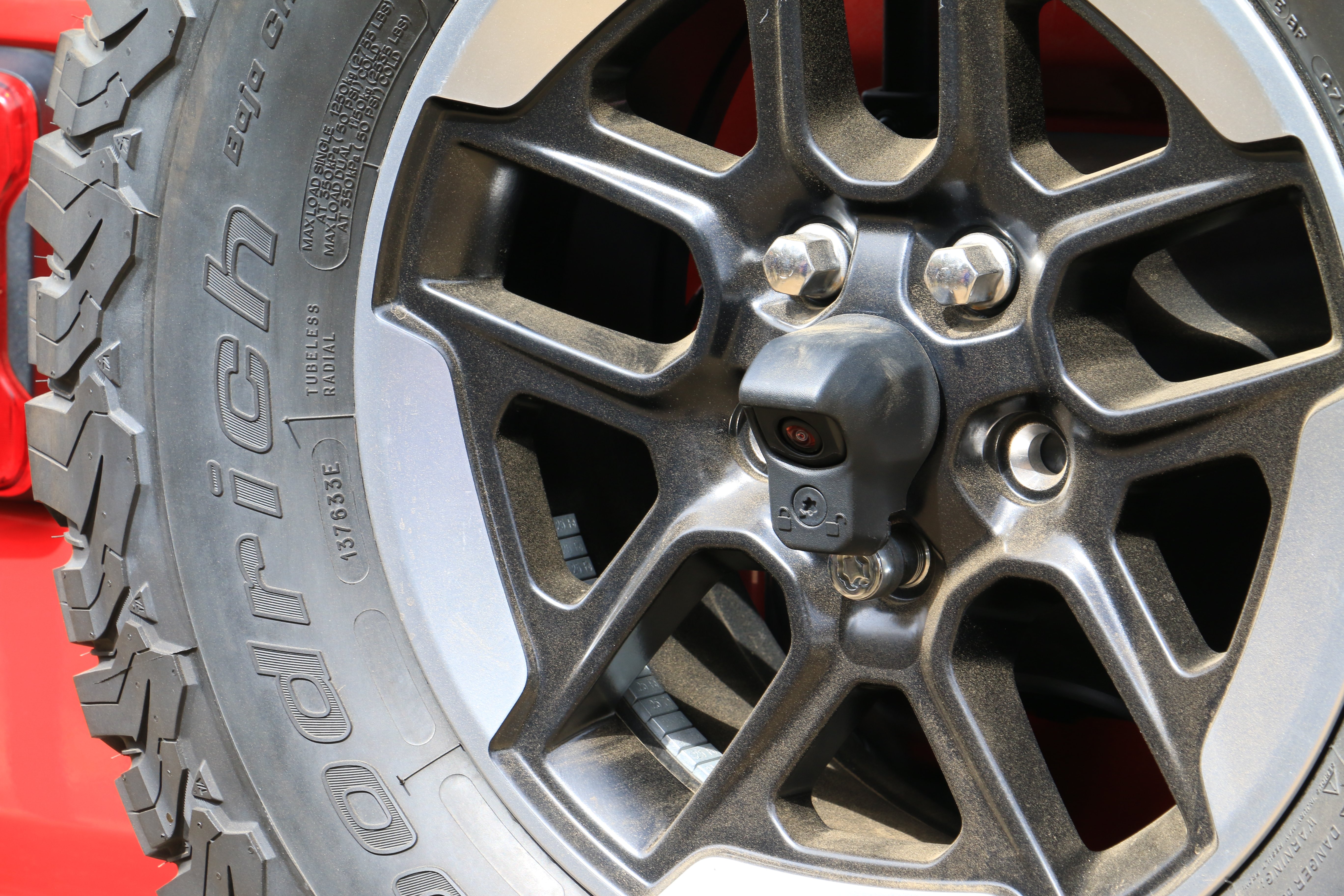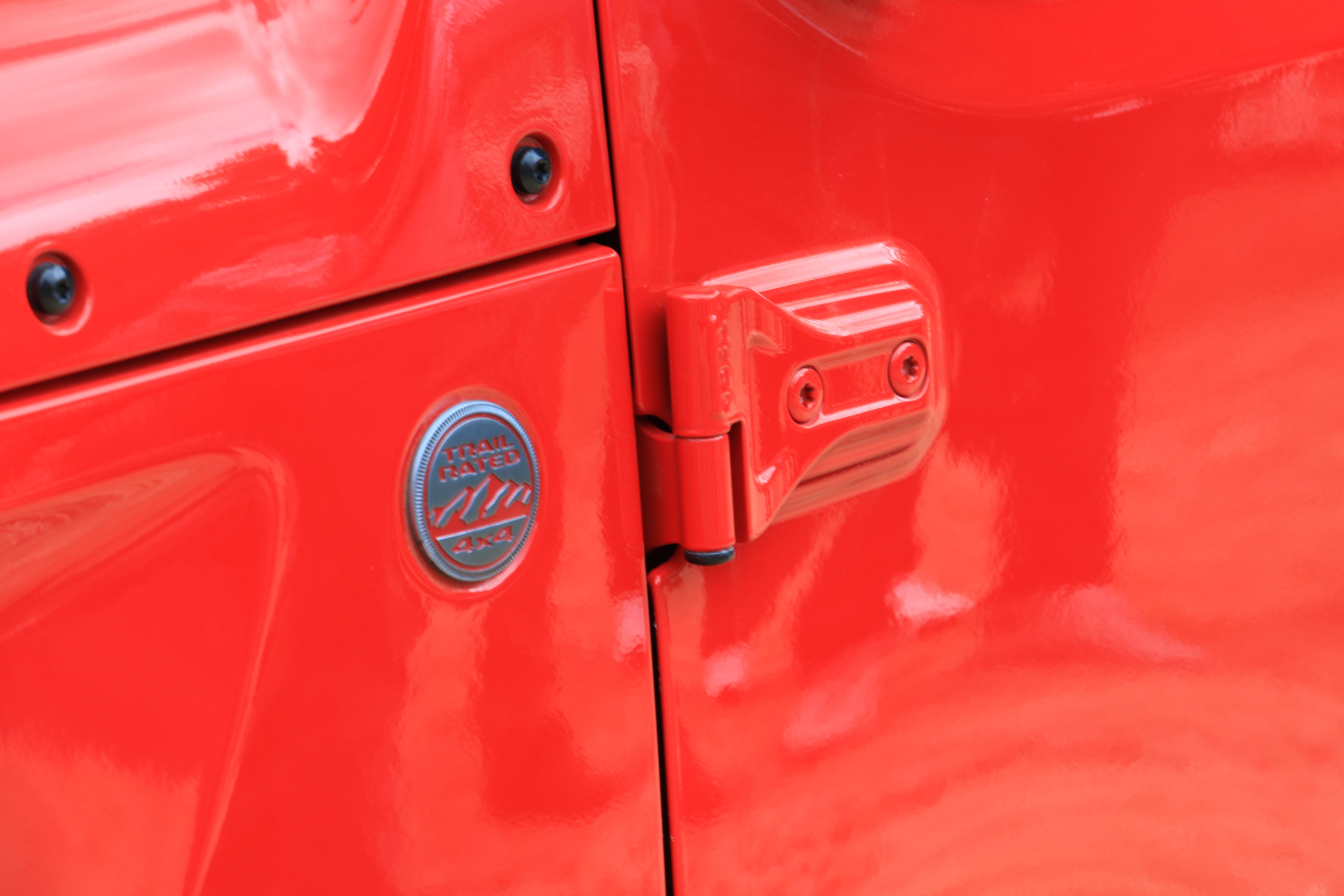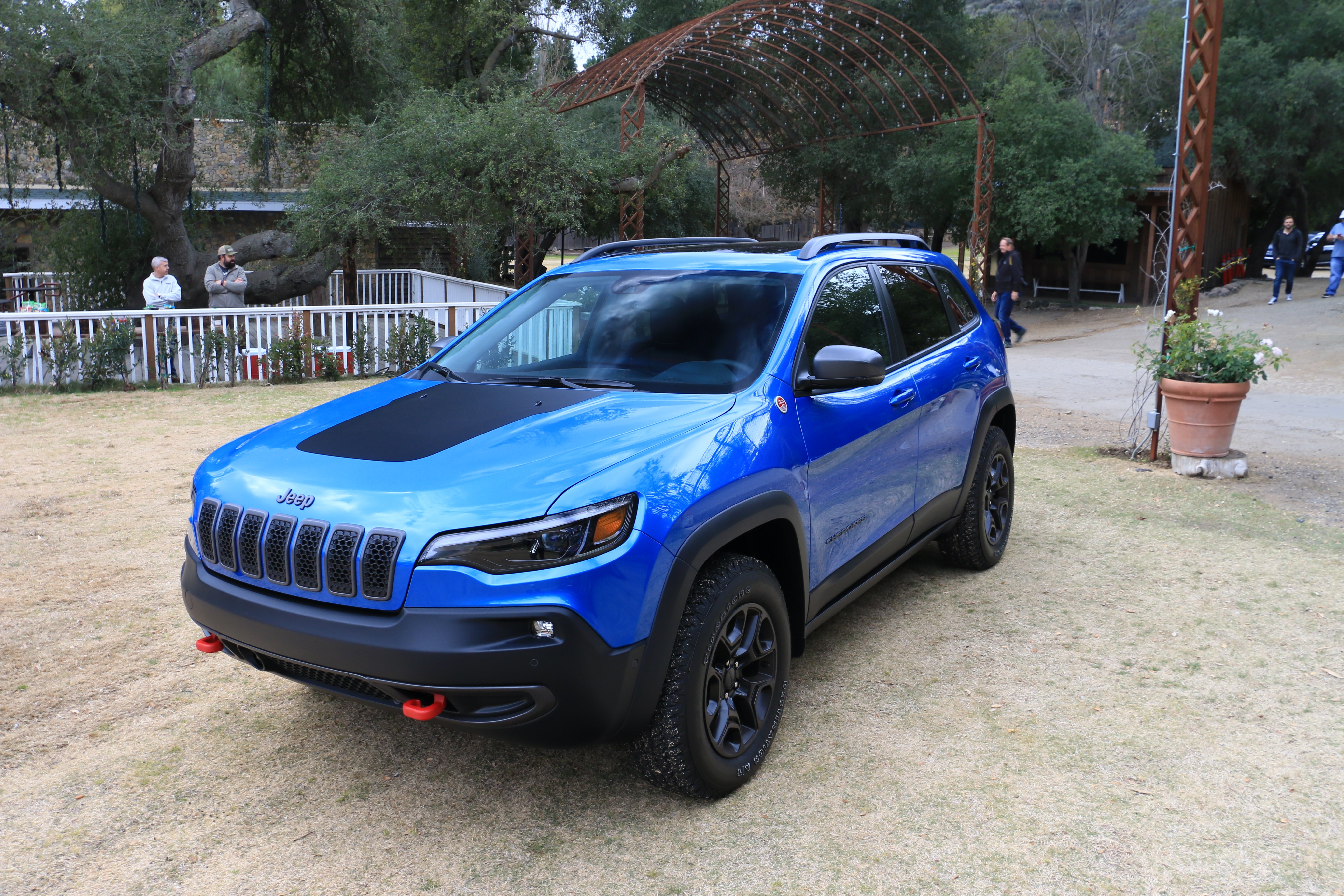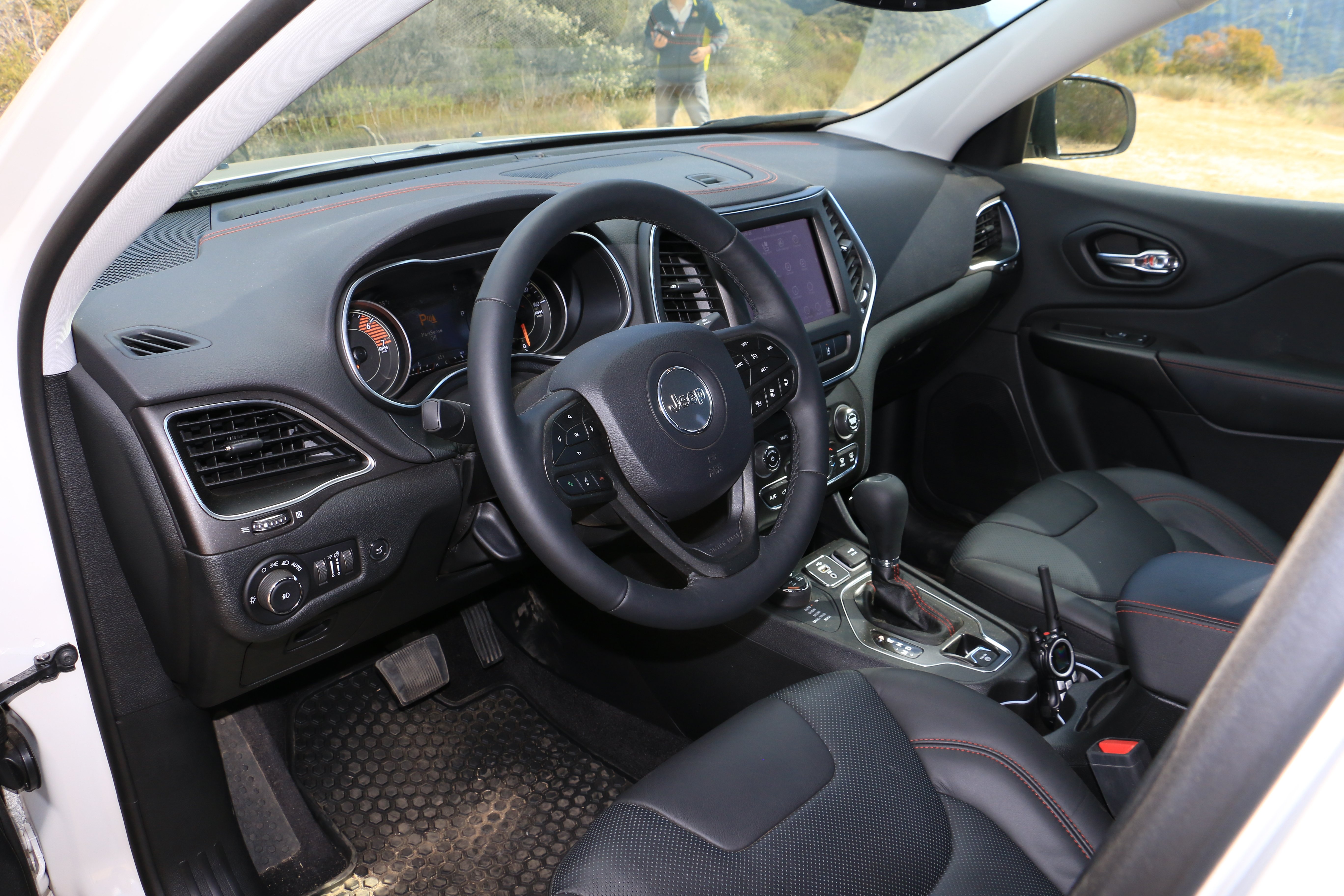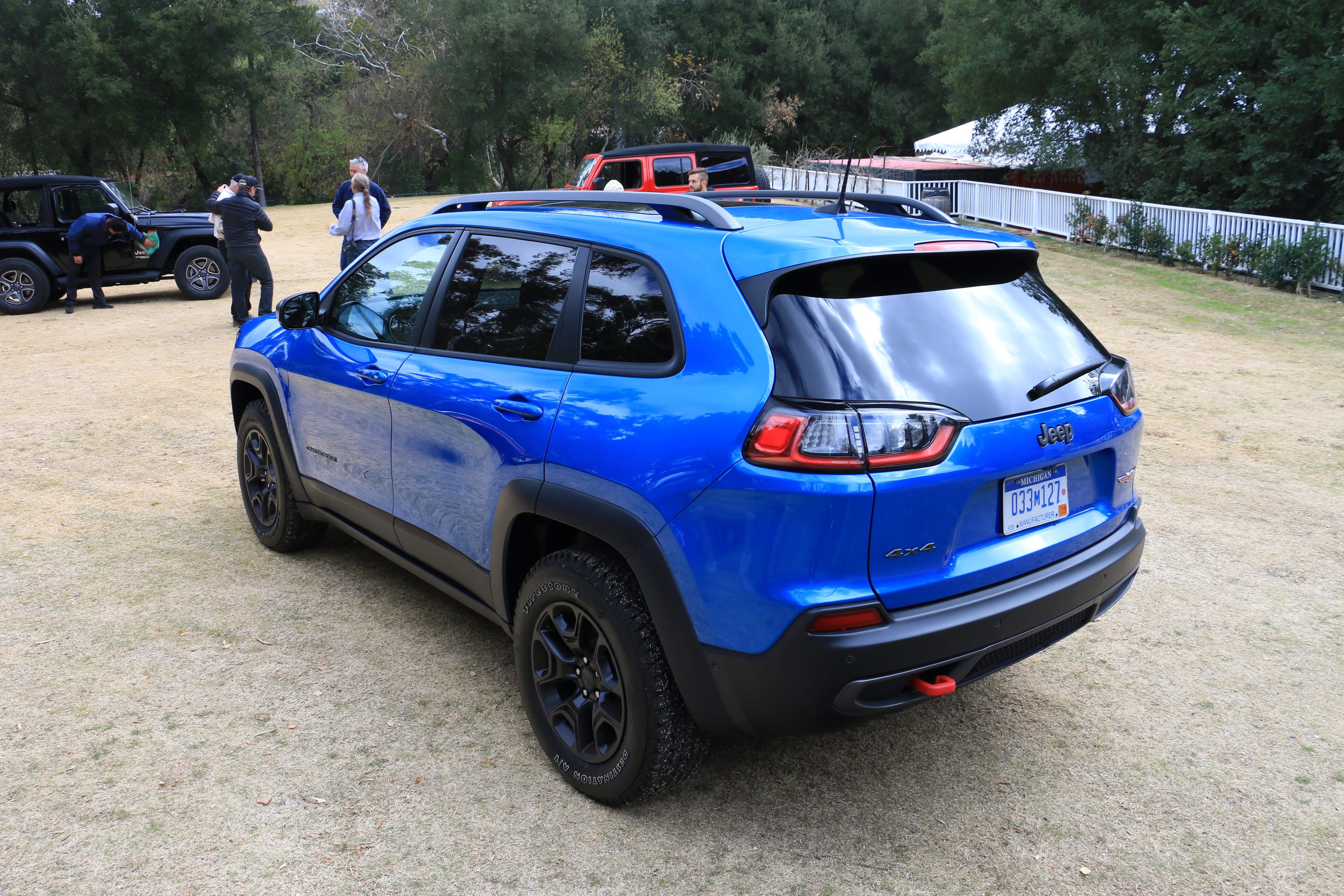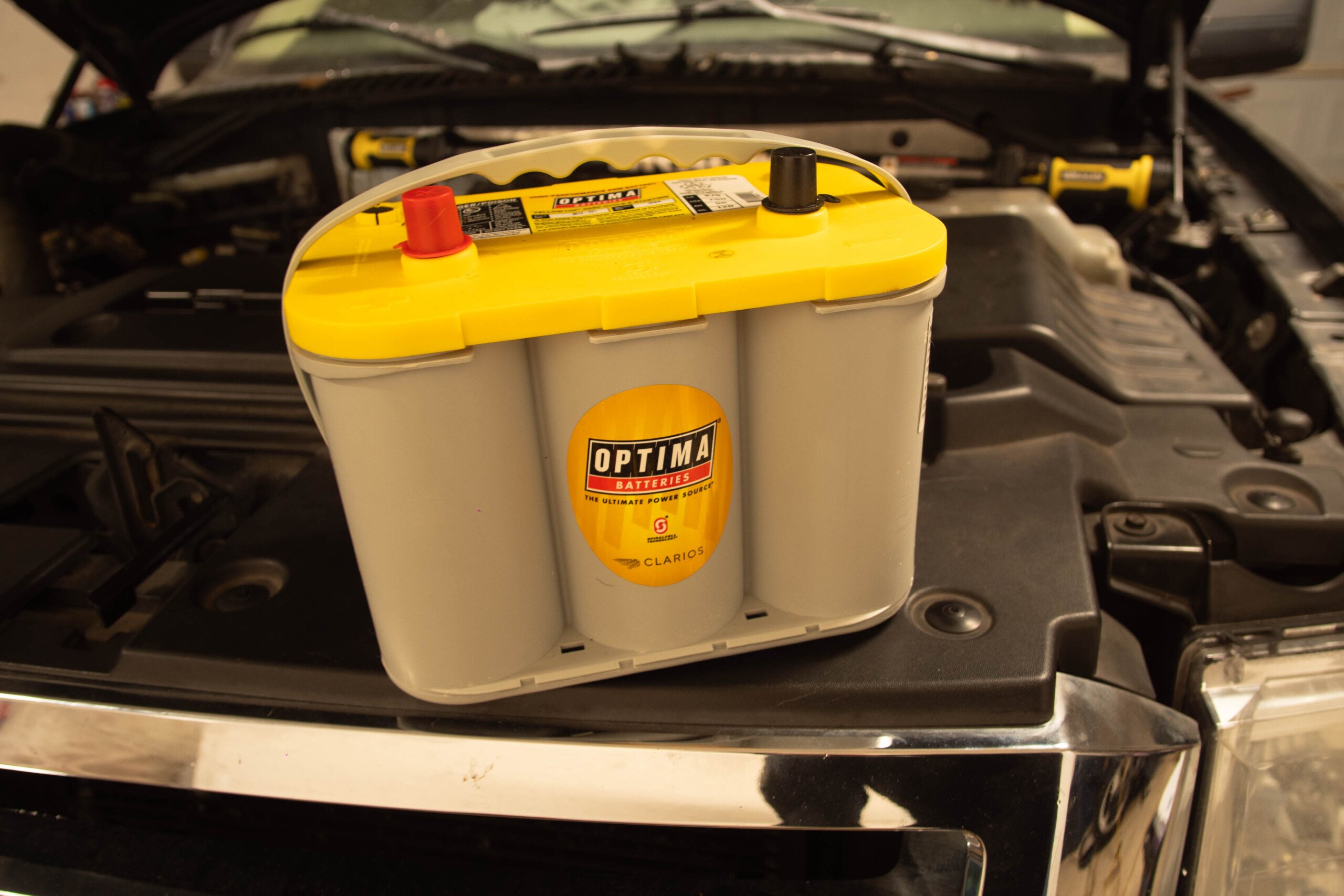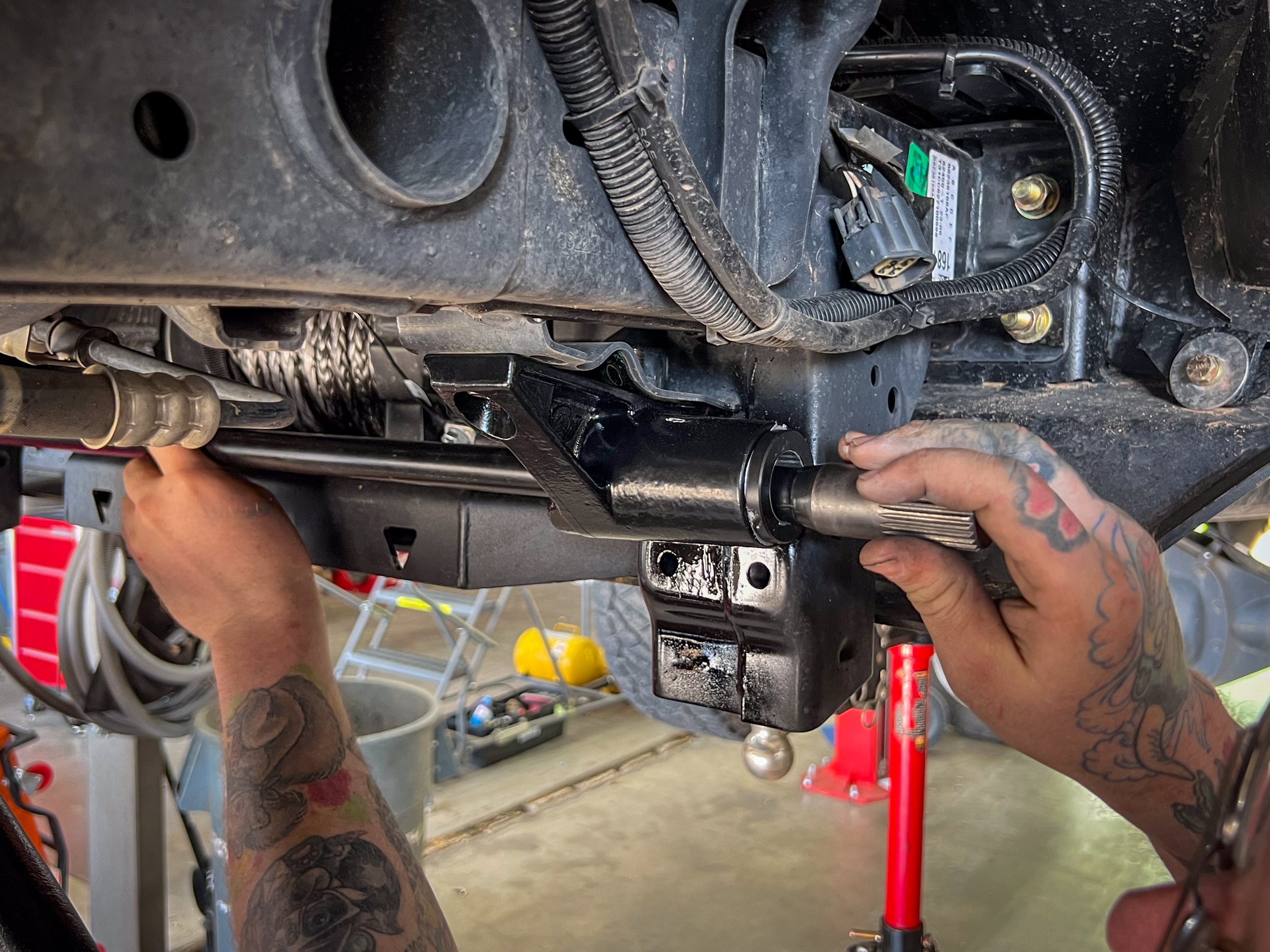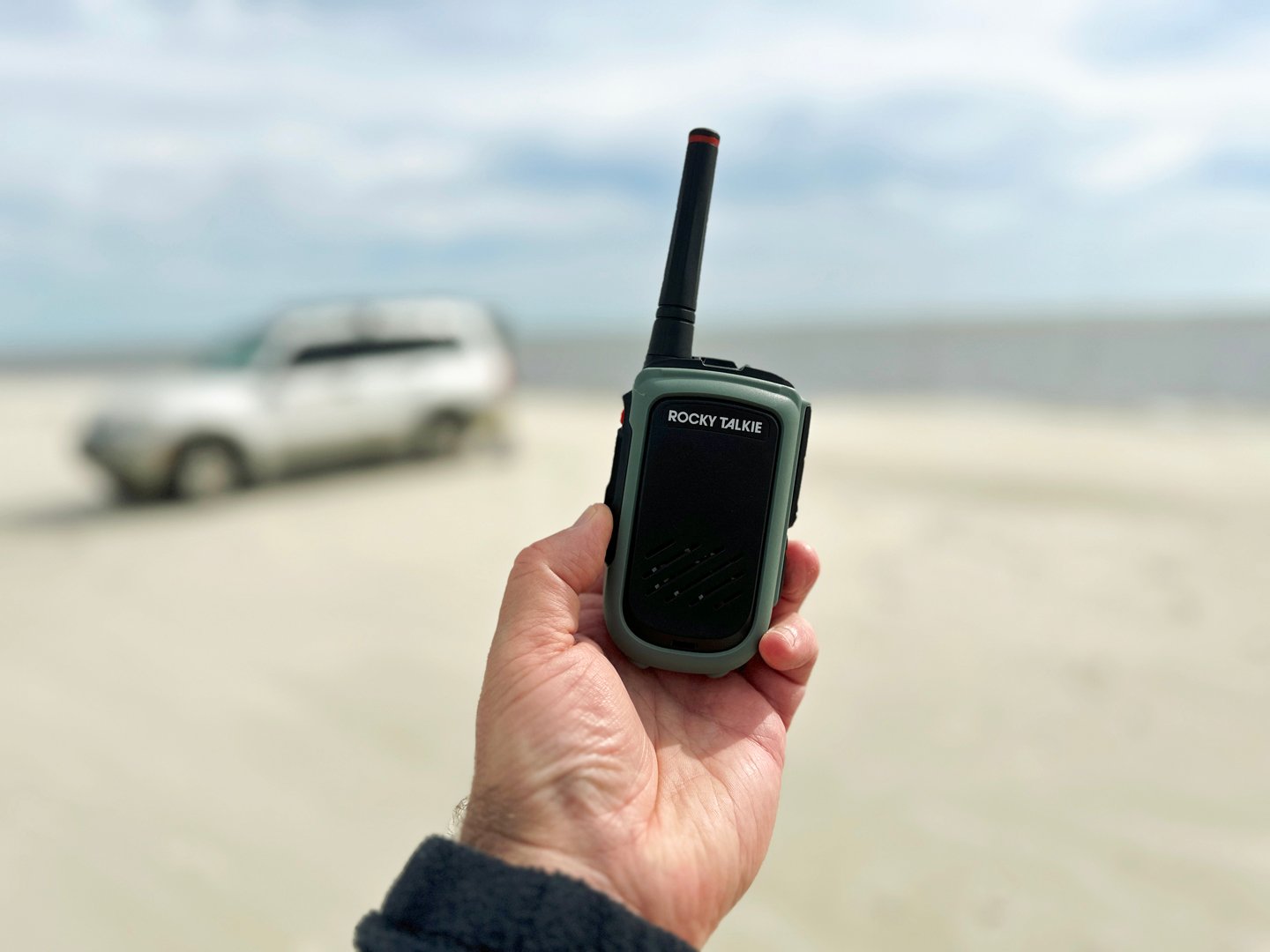As we gazed upon the all-new JL-series Wrangler and the 2019 Cherokee at the Calamigos Ranch in the hills overlooking Malibu, we heard Jeep’s Scott Tallon state, “Both of these vehicles are very important to the brand for different reasons.” After some recent much-needed rainfall, the off-road trails surrounding the facility – now familiar to use from their use in previous FCA events – are looking more challenging than usual. The ruts are deeper, the grades are steeper, the loose dirt a bit more foreboding.
But the Wrangler Rubicon parked behind Tallon looks like it’s up to the task.

The new Wrangler is offered in three main trim levels – Sport, Sahara, and Rubicon, seen here respectively from left to right. While the Sport and Rubicon models are available in both two-door and four-door configurations, the more upscale Sahara model is only offered as a four-door.
“You think about the Wrangler and what it means to Jeep – it’s the face of the brand, it’s the icon,” said Tallon. “You say the word ‘Jeep’ and that’s what everyone thinks of. It’s not so often we get to launch a brand new Wrangler.”
Indeed, it has been a while. Up until the launch of this 2018 model, the Wrangler hadn’t seen a significant redesign since 2006. But Jeep fanatics aren’t the type of folks who can be wooed by a fresh coat of paint – these buyers demand substance. “It hasn’t been compromised in terms of capability – in fact, the capability has been improved over its predecessor,” said Tallon.
This was a legitimate concern for some. While many looked forward to the launch of the JL Wrangler and the modernization it would bring, those significant changes (and potential complexity) had some worried about the effect it might have on the Wrangler’s legendary reputation for being able to tackle serious terrain right out of the box. And for FCA on the whole, the Jeep’s reputation is particularly important to their bottom line.
Scott Tallon (left) and Mark Allen gave us the low-down on the JL-series Wrangler and the 2019 Cherokee.
“If you think about where we’ve come in 77 years, from those very humble beginnings to a brand that’s now offered in 150 countries worldwide and sold 1.4 million vehicles across the globe in 2017, our success has been built on that original Willys DNA,” commented Tallon.
But the Jeep brand doesn’t live and die by the success of the Wrangler alone. “The Cherokee is very important to us too,” Tallon continued. “This vehicle plays in the largest SUV segment on the planet. Here in the US, that segment represents about two million vehicles annually.” Revised for the 2019 model year, the Cherokee now features reworked front and rear end bodywork, new powertrain options, and a host of other tweaks to keep the KL-series SUV fresh.
Anxious to show off their latest efforts, Jeep set us loose on the trails with their latest hardware so we could experience firsthand just how capable these new machines are.
Wrangler JL
“This Wrangler is the result of a journey of fixing things, improving things, listening intently to our customers, and trying to check everything off our wish list,” says Jeep’s head of design, Mark Allen. “This vehicle is very special to us, it’s so different from everything else that we do. With this vehicle, when there was a choice to be made during its development, the enthusiast always won. And that’s critical, because it’s the enthusiast that’s keeping this vehicle alive.”
Allen explained that the history is particularly important when it comes to Wrangler design. Riding on a slightly longer wheelbase to accommodate the new optional eight-speed automatic transmission, the Wrangler’s proportions have changed a bit, but the theme is still intact. “We tried to kind of tuck that proportion change away and hide it,” he says. “But you’ll also see a number of historic details, like the headlight design’s nod to the CJ-5. It’s the little cues like that.”
This vehicle is very special to us, it’s so different from everything else that we do. With this vehicle, when there was a choice to be made during its development, the enthusiast always won. And that’s critical, because it’s the enthusiast that’s keeping this vehicle alive. – Mark Allen, Chief Designer, Jeep
Utilizing high-strength aluminum for the doors, hood, fenders and windshield frame, along with magnesium for the swing gate, the new Wrangler has dropped some weight in the overhaul, and a new turbocharged and direct-injected, 270-horsepower 2.0-liter four-cylinder gas engine joins the 285hp 3.6-liter Pentastar V6 in the engine lineup in an effort to further improve fuel efficiency as well. A 3.0-liter six cylinder EcoDiesel will join also the menu in 2019.
Inside, FCA’s fourth generation Uconnect system brings modern infotainment options to the Wrangler with Apple CarPlay and Android Auto compatibility, while features like the optional Sky One-Touch power top make the interior a bit more accomodating.
While the interior of the Wrangler gets some modernization and a rearview camera now comes standard on all models, Jeep hasn't lost sight of the Wrangler's original charm. Those new aluminum doors come off with just a few screws, and tools are provided with the Jeep for the job.
Underneath, a five-link suspension, solid front and rear axles, locking differentials and a disconnecting front sway bar ensure that the Jeep can hold its own when the going gets dirty.
And hold its own it did. Tackling the trail in a manual gearbox-equipped Wrangler Rubicon, the Jeep made short work of even the most difficult elements, due in no small part to the 33-inch Goodyear all-terrain rubber, 4.10:1 gear ratio, and the Dana 44 front and rear axles. We ended up doing the trail a second time, purposely falling back from the pack just to we could blast through some of the sections at higher speeds. The Wrangler was unfazed – we weren’t even scratching the surface of what this thing can handle.
All that capability does come at a premium, though. “If you check all the boxes you can go over 50K,” Tallon said when asked about pricing. Indeed, our V6-equipped Rubicon four-door tester, with a base price of $40,495, came out to $50,270 with destination and options that included leather interior appointments, a towing package, LED lighting, upgraded infotainment, heavy duty bumpers, and black 17-inch wheels.
2019 Cherokee
While it might be easy to overlook in the presence of the all-new Wrangler, the Cherokee has seen some notable revisions of its own. “When we first launched the Cherokee in 2014, we knew we had to break through – there’s a lot of established players in this segment,” said Tallon. “We had to get noticed, we had to start the conversation, and there’s no question that happened when it debuted.”
The Cherokee's visual refresh solves all of the biggest grievances we had with the design that debuted in 2014, while meaningful updates to the infotainment system and a new engine offering should help the Cherokee gain some ground in the highly contested mid-sized crossover segment.
Tallon is referring to the much-maligned front end design of the KL-series Cherokee, which utilized blade-like, oddly positioned headlights that were met with nearly universal disapproval from the public. “Immediately, you’ll notice the design change – a much more refined look in line with the Compass and the Grand Cherokee,” he added.
Along with the front end tweaks, the Cherokee gets a redesigned tailgate as well. “When we reworked the rear end of the vehicle, we also repackaged the cargo area,” Tallon told us. “We extended the width of it almost three inches, and increased the overall cargo volume by more than three cubic feet.”

The new turbocharged 2.0-liter mill available in the Cherokee might be down one horsepower to the 3.2-liter V6, but it offers 56 more pound-feet of torque.
Under the hood, the same 270-horsepower, four-cylinder mill found in the Wrangler is available here as well, along with a 3.2-liter, 271 horsepower V6 and a 2.4-liter four cylinder mill with 180 horsepower. A nine-speed automatic transmission is outfitted to the Cherokee as standard, regardless of engine choice.
Out in the dirt, the off-road-focused Cherokee Trailhawk continues to impress. While we expect capability from a Wrangler Rubicon, it’s a bit surprising to see a mid-sized crossover with its rear wheel three feet in the air on a trail, plowing through the worst of it without skipping a beat.
“Trail Rated” means something here, and with the Cherokee’s road-focused tires, we have to give a lot of the credit to Selec-Terrain traction control system and its uncanny ability to know right where to put the power to keep the Cherokee moving forward with minimal drama. Hill descent control was also useful when we headed down some of the steeper sections with loose rocks, and switching the transmission over to manual mode allowed the driver to speed up or slow down the descent in small increments by bumping the shifter up or down.
At the end of the day, it’s clear that both the JL-series Wrangler and updated KL-series Cherokee continue to do the Jeep name proud. Allen says a lot of that can be attributed to the owners. “I’m sure you’re aware of our activities in Moab, Utah every year,” he said. “We build six or seven vehicles and bring out our friends in the Jeep community for some off-roading. We started doing that years ago and it has paid good dividends. It’s a very powerful tool for us to get feedback from enthusiasts, and it helps to drive our development efforts.”
It’s a rare for an automaker to take such a direct approach with consumers to determine the design and engineering strategies of their vehicles. But if the Wrangler Rubicon and Cherokee Trailhawk serve as the result of those efforts, it’s clear that Jeep’s game plan is working.





